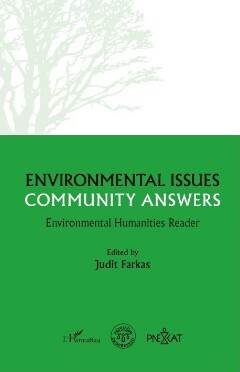Page 86 [86]
84 RÓBERT BALOGH
Braudel, Fernand 1996. A Földközi-tenger és a mediterrán világ II. Fülöp kordban [The
Mediterranean and the Mediterranean world in the age of Philip II]. Budapest, Osiris
Kiadó.
Champagne, Marc 2016. Diagrams of the Past: How Timelines Can Aid the Growth of
Historical Knowledge. Cognitive Semiotics 9 (1): 11-44.
Cronon, William 1993. The uses of environmental history. Environmental History Review
17/3. 1-22.
Demeter, Gdébor — Németh, Gabor — Szulovszky, Janos — Bottlik, Zsolt — Frisnyak, Zsuzsa
— Nagy, Béla — Beluszky, Pal — Radics, Zsolt — Nagy, Mariann — Jakobi, Akos et al.
2020. Kisatlasz a dualizmus kori Magyarország regionális társadalmi-gazdasági
folyamatainak tanulmadnyozdsdhoz (1869-1910) [Pocket atlas for the examination of
the regional socio-economic processes of Hungary in the period of the Dual
Monarchy]. Budapest—Debrecen, Kapitälis.
Dóka, Klára 1982. Gazdálkodás a Tisza árterein a XIX. század első felében [Farming in
the floodplain of the Tisza in the first half of the 19th c.]. Agrártörténeti Szemle,
24/3-4: 277-303.
Eszik, Veronika 2021. Társadalmi egyenlőtlenségek és környezettörténet [Social
inequalities and environmental history]. In Balogh, Róbert — Bodovics, Éva —
Demeter, Gábor — Eszik, Veronika — Erdélyi, Mátyás — Vadas, András (eds.): Táj,
ember, tudás — zöldtörténelem. Bevezetés a környezettörténet irodalmába. Budapest,
Bölcsészettudományi Kutatóközpont, 111-114.
Ferenczi, László 2006. Vízgazdálkodás a középkori Magyarországon [Water management
in mediaeval Hungary]. In Gyöngyössy, Márton (ed.): Magyar középkori gazdaság- és
pénztörténet. Jegyzet- és forrásgyűjtemény. Budapest, Bölcsész Konzorcium, 105—152.
Géczi, János 2020. A rózsa labirintusa. Egy örök jelkép nyomában ILabyrinth of the rose.
In Search of an eternal symbol]. Budapest, Athenaeum Kiadó.
Hóman, Bálint — Szekfű, Gyula 1935-1936. Magyar történet [A history of Hungary].
Budapest, Magyar Elektronikus Könyvtár.
Horváth, Márk 2021. Az antropocén. az ökológiai válság és a posztantropocentrikus termé¬
szetkulturdlis viszonyok [The Anthropocene, the ecological crisis, and post-Anthropo¬
cene Relations Between nature and culture]. Budapest, Prae.
Huhäk, Helena 2020. Place Attachment in a Concentration Camp: Bergen-Belsen.
Hungarian Historical Review, 9 (3): 430-451. https://doi.org/10.38145/2020.3.430
K. Németh, András — Máté, Gábor 2020. Horbosok, puszták, búvólikak. Tájtörténeti
tanulmányok a 16-18. századi Dél-Dunántúlról ISunken roads, wastelands, hideouts.
Landscape historical Landscape studies of Southern Transdanubia in the 16 — 18th
c.]. Budapest, LHarmattan.
Kaán, Károly 1939. Alföldi kérdések. Erdők és vizek az Alföld kérdéseiben IGreat Plain
guestions. Forests and waters in the Issues of the Great Plain]. Budapest, Stádium.
Kelbert, Krisztina 2016. Szemtől szemben. Képek a szombathelyi zsidóság történetéből [Face to
face. Pictures from the history of the Jews in Szombathely]. Szombathely, Yellow Design.
Kőszegi, Margit — Bottlik, Zsolt — Telbisz, Tamás — Mari, László 2019. A , nemzeti park"
koncepció tér- és időbeli változásai [Changes of the , national park" conception in time
and space]. Földrajzi Közlemények, 143/4: 308—323.
Knézy, Judit 1980. Paraszti tejfeldolgozás és tejtermékek fogyasztása Somogyban (1850—
1945) [Milk processing and consumption of dairy products by peasants in Somogy
(1850 — 1945)]. In Knézy, Judit (ed.): Somogy néprajza II. Anyagi kultúra. Kaposvár,
Somogy Megyei Múzeumok Igazgatósága, 137-168.
Konkoly-Gyuró, Éva — Balázs, Pál 2016. Erdőborítás-változás a Kárpát-medence térségében
a 19. század közepétől napjainkig [Changes in forest cover in the Carpathian Basin
from the mid-19th c. to the Present Day], Erdészettudomdnyi Közlemények, 6/1: 79—97.

